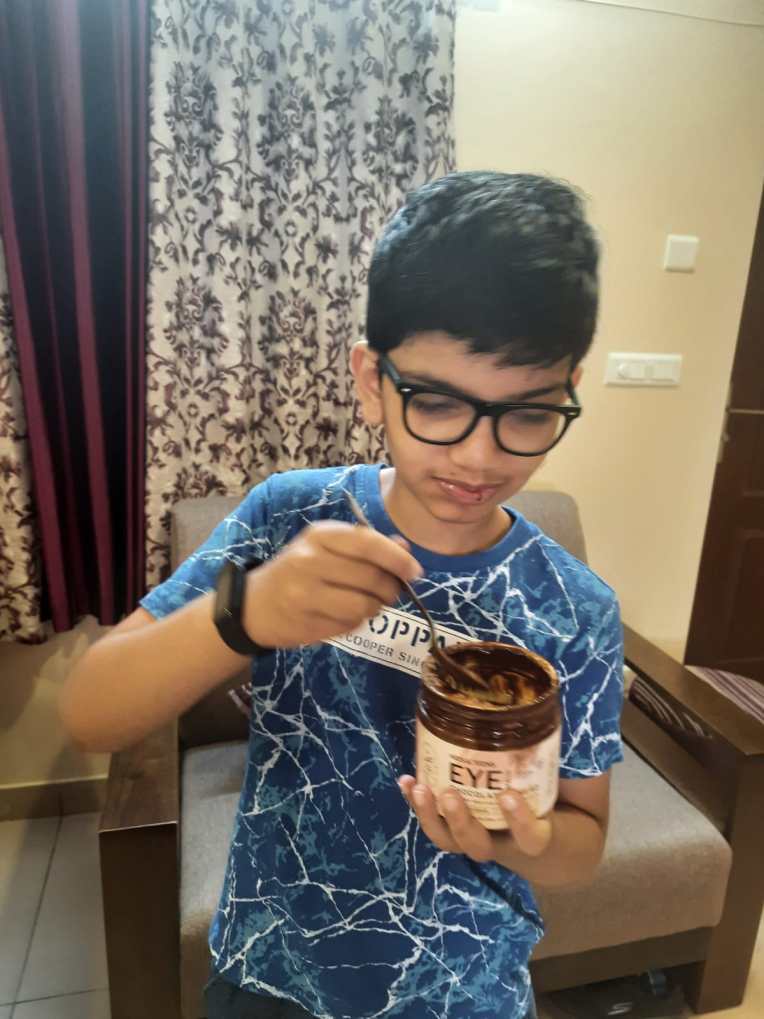Premature infants/babies or Preemie means that the baby is born more than three weeks before the baby’s estimated due date (EDD). This means that the premature infants are born anytime before the start of the 37th week of pregnancy.
Premature babies, especially those born very early, often have medical problems. The earlier your baby is born, the higher the risk of complications.
Depending on how early a baby is born, he or she may be:
- Late preterm, born between 34 and 36 completed weeks of pregnancy
- Moderately preterm, born between 32 and 34 weeks of pregnancy
- Very preterm, born at less than 32 weeks of pregnancy
- Extremely preterm, born at or before 25 weeks of pregnancy
Most premature births occur in the late preterm stage.
Causes for premature delivery:
Although there is no specific cause for premature birth, but it might happen due to one or more of the following reasons:
- Having a history of premature delivery
- Twin, triplet or multiple pregnancy
- Less gap between two pregnancies, usually less than 6 months of gap
- Issues with uterus, cervix or placenta
- Infection of amniotic fluid or lower genital tract
- Conceiving through In Vitro Fertilization
- Smoking cigarettes or using illicit drugs
- Chronic conditions such as diabetes or high blood pressure
- Multiple miscarriages or abortions
- Stressful life events such as death in family, divorce or domestic violence
- Being underweight or overweight before pregnancy ( How to reduce weight?)
- Physical injury or mental trauma
Growth and Development of Premature Infants:
According to the American Academy of Pediatrics (AAP), development is not a race, and babies develop at their own pace. Even premature infants will gradually reach their developmental milestones and will be on track with full term babies by age 3 or so. But a premature baby’s initial growth and development is slightly different from a full term baby. Therefore, parents of preemies will need to adjust their baby’s age to get a true picture of where their baby should be in his/her developmental stage.
How to calculate your baby’s adjusted/correct age?
- Identify the number of weeks your baby was born earlier than the Estimated Due Date(EDD)
- Subtract this number from your baby’s actual age in weeks (number of weeks since the date of birth).
- This is your baby’s adjusted age (also called corrected age).
For example: Suppose your baby’s EDD was 8th December but she arrived on 10th November(4 weeks earlier), then her corrected age on 10th June will be 28 weeks-4 weeks=24 weeks.
Factors that affect the growth and development of Premature Babies:
1.How early they were born?
The earlier the baby is born, the more likely he or she is to face health issues which can impact their growth and development. Extremely preterm babies are more prone to serious complications as compared to late preterm babies who tend to catch up to full-term babies sooner.
2. Weight at the time of Birth:
Another important factor that affects the growth and development of premature infants is their birth weight. Lower birth weight of a baby means that the baby is at risk of facing health complications.
3.Hospital stay time:
Extremely preterm babies usually spend some weeks in the hospital. If your baby spent a long time in the neonatal intensive care unit (NICU) and needed a lot of special care, they are likely to need extra time to develop.
4. Other medical conditions:
Preemies are more likely to have medical issues like heart, lung infections or intestinal conditions at the time of birth since they have missed out on a lot of crucial development in the final months of pregnancy. This slows down their development and hence premature babies have developmental delays as compared to full term babies.
How to monitor growth and development of premature infants?
Weight, height and head circumference are the key parameters to track the growth and development of babies(Tips to increase height?). But for premature babies, their weight, height and head circumference vary depending on the gestational week of their birth and their overall health at birth. The following are some key points to remember:
- Premature infants have to stay in the neonatal intensive care unit (NICU) where they start gaining weight within a few days after birth.
- Healthy premature infants are likely to show improvement first in the head circumference, followed by weight and then height.
- How much weight a premature baby will gain per day depends on how early he/she was born. For example, a baby with a gestational age of 24 weeks (born after the 24th week of pregnancy) may attain five grams per day while those born at 33 weeks or later can put on as much as 30 grams per day.
- The desirable weight gain in babies who are born with a birth weight of more than two kilograms is 20-30 grams per day.
- The height of preterm babies increases by about 1.1 centimeters every week until the completion of the ideal gestational age, which is about 40 weeks.
Complications associated with Preterm Birth:
While not all premature babies experience complications, being born too early can cause short-term and long-term health issues. Generally, the earlier a baby is born, the higher the risk of complications. Birth weight plays an important role too.
Short-term complications
In the first few weeks, the complications of premature birth may include:
1.Difficulty in breathing:
A premature baby may have trouble breathing due to an immature respiratory system. If the baby’s lungs lack surfactant (a substance that allows the lungs to expand),he or she may develop respiratory distress syndrome because the lungs cannot expand and contract normally. They may also develop a lung disorder known as bronchopulmonary dysplasia. In addition, some preterm babies may experience prolonged pauses in their breathing, known as apnea.
2.Heart problems:
Patent ductus arteriosus (PDA) and low blood pressure (hypotension) are the most common heart problems that premature babies face. PDA is a persistent opening between the aorta and pulmonary artery. Usually this heart defect closes on its own, but if left untreated, it can lead to a heart murmur, heart failure as well as other complications.
3.Brain hemorrhage:
The earlier a baby is born, the greater is the risk of bleeding in the brain, known as an intraventricular hemorrhage. Most hemorrhages are mild and generally resolve with little short-term impact. But some babies may have larger brain bleeding that may cause permanent brain injury.
4.Low body temperature:
Since premature babies don’t have the stored body fat of a full-term infant, they can’t generate enough heat to maintain a normal body temperature. This might result in an abnormally low core body temperature also known as hypothermia. Hypothermia may cause breathing difficulties and low blood sugar levels. Moreover, a premature infant may use up all of the energy gained from feedings just to stay warm. This is the reason why premature infants require additional heat from a warmer or an incubator until they are able to maintain body temperature without assistance.
5.Immature Gastrointestinal system:
Premature infants are prone to have immature gastrointestinal systems, which might result in complications like necrotizing enterocolitis (NEC). This potentially serious condition, in which the cells lining the bowel wall are injured, can occur in premature babies once they start feeding. However, premature babies who receive only breast milk have a much lower risk of developing NEC. (Which foods help to increase breast milk supply?)
6.Anemia and Newborn Jaundice:
Premature babies are at higher risk of anemia (low count of red blood cells) and newborn jaundice. Newborn jaundice is a yellow discoloration in a baby’s skin and eyes that occurs because the baby’s blood contains excess bilirubin(yellow-colored substance) from the liver or red blood cells. (How Iron rich foods help in Anemia?)
7.Poor Metabolism:
Premature babies often have problems with their metabolism. Some premature babies may develop an abnormally low level of blood sugar (hypoglycemia). This happens because premature infants typically have smaller stores of stored glucose than full-term babies. They also have difficulty converting their stored glucose into more-usable, active forms of glucose.
8.Low Immunity:
An underdeveloped immune system is quite common in premature babies which can lead to a higher risk of infection. Infection in a premature baby can quickly spread to the bloodstream, causing sepsis. (Foods that help to boost immunity?)
Long-term complications
In the long term, premature birth may lead to the following complications:
1.Cerebral palsy:
Cerebral palsy is a disorder of movement, muscle tone or posture that can be caused by infection, inadequate blood flow or injury to a newborn’s developing brain either early during pregnancy or while the baby is still young and immature.
2.Impaired learning:
Premature babies are more likely to lag behind their full-term counterparts on various developmental milestones. This is the reason why a premature child is more likely to have learning disabilities. ( How some foods can help with learning difficulties?)
3.Impaired Vision:
Premature infants may develop retinopathy of prematurity, a disease that occurs when blood vessels swell and overgrow in the light-sensitive layer of nerves at the back of the eye (retina). Sometimes the abnormal retinal vessels gradually scar the retina, pulling it out of position. When the retina is pulled away from the back of the eye, it’s called retinal detachment, a condition that, if undetected, can impair vision and cause blindness. (Foods that help with eye health?)
4.Hearing loss:
Premature babies are at a higher risk of hearing loss. As a routine, all babies have their hearing checked before going home from the hospital.
5.Dental problems:
Premature infants who have been critically ill are at increased risk of developing dental problems, such as delayed tooth eruption, tooth discoloration and improperly aligned teeth.
6.Chronic health issues:
Premature babies are more likely to have chronic health issues, some of which may require hospital care. Infections, asthma and feeding problems are more common amongst them. (Tips to avoid frequent infections in kids?)
How to prevent Premature Deliveries?
Although the exact cause of preterm birth is not known, some preventive measures can be taken to help women, especially those who are at a higher risk of preterm deliveries.
- Progesterone supplements: Progesterone supplements may help to reduce the risk of preterm birth in woman who have a history of premature deliveries, short cervix or both issues.
- Cervical cerclage: Women with short cervix or a history of cervical shortening might need this procedure during pregnancy. In this procedure, cervix is stitched closed with strong sutures to provide extra support to the uterus.
Recipe: COOKIES WITH SESAME AND HIDDEN NUTS AND HERBS
Let’s make every dish tasty and nutritious by ‘hidden’ nutrition of veggies, herbs and nuts.

Check the Recipe made with Ayurvedic spread by Iyurved- DAILY NUTRITION spread.
CHECK MORE HEALTHY RECIPES LOVED BY KIDS.
PRODUCTS:
We are happy to introduce our range of nutritious & tasty kid’s Ayurvedic foods!!
We know that preparing and feeding healthy foods everyday is a huge task. Even more tough when kids are picky eaters. Kids prefer certain foods and formats. It is not easy to feed kids bitter Ayurvedic herbs, variety of vegetables, fruits, nuts and seeds everyday.
Mixed with Ayurvedic herbs, this unique Ayurvedic spread is an easy solution to feed daily nutrition for Immunity, Brain development, Bone strength and overall-growth to kids without any fuss.

India’s First Tasty Kids Nutrition fortified with Ayurvedic herbs.
For proper nutrition, immunity, strong bones & muscles and overall growth in kids, give Daily Nutrition Savoury Spread | Made with clinically proven ‘5 Ayurvedic Herbs and 7 Nuts’ | ORDER | 0% preservative | 0% Palm oil | High in CALCIUM, VITAMIN D and VITAMIN B12 |
Check more products for: Immunity, Gut health, Digestion, Healthy weight, Brain development, Eye health, Autism, Hyperactivity, Sleep, Bones and Overall growth
(Shipping in India and Singapore only)
Join Facebook group for FREE CONSULTATION
Foods and Remedies by a Nutrition Expert



































